
Thank you Anand. I'm sure you would have enjoyed your trip to Idar even though it was quite long ago.
2,291 views
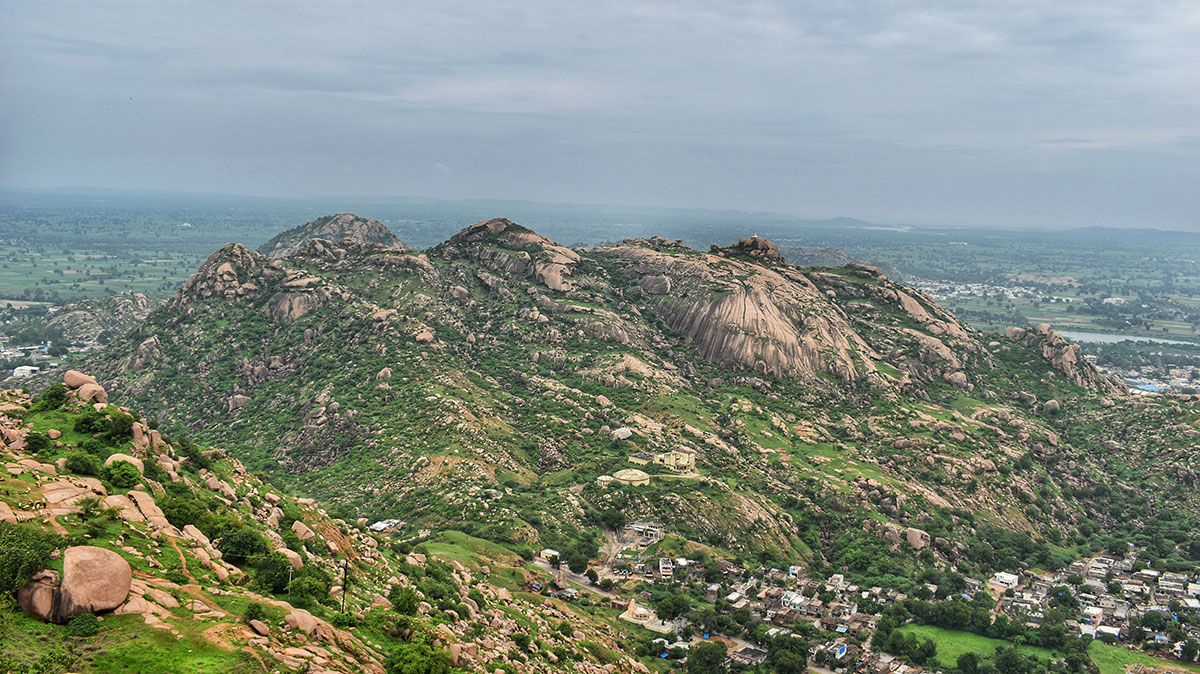
“Ame Idariyo Gadh jitya re…anand bhayo” is the lyrics of a popular Gujarati wedding song. These verses celebrate the conquest of "Idariyo Gadh," the most formidable realm on the Idar mountain. Upon my arrival in Idar, I was greeted by a cascade of granite boulders clinging to the peaks, each telling a story of an enduring legacy. Believe me, there is no other place in Gujarat that possesses such immense wealth in its natural ecosystem. The sight of this spectacle brought back childhood memories, as if the echoes of "Idariyo Gadh" still reverberated. The urge to shout from those mountain summits was undeniable, fueled by the sheer elation the scenery inspired. While deeply rooted in Gujarati culture, Idar's allure often goes unnoticed in Gujarat's tourism campaigns. These colossal boulders are frequently overlooked, even by local Gujarati tourists, who regretfully ignore their significance and charm.
Expanses of tranquil beauty envelop this quaint town in Gujarat, stretching as far as the eye can fathom. As a result of my enthusiasm behind the wheel, my wife was concerned I would crash into someone. A few minutes later, I moved the car to curbside parking on the highway to soak up the beauty and take pictures. The scene triggered memories of my journey between Bangalore and Chennai on Tamil Nadu's highway, where colossal rocks flanked the route for countless kilometers, mirroring the awe-inspiring landscapes of Idar.
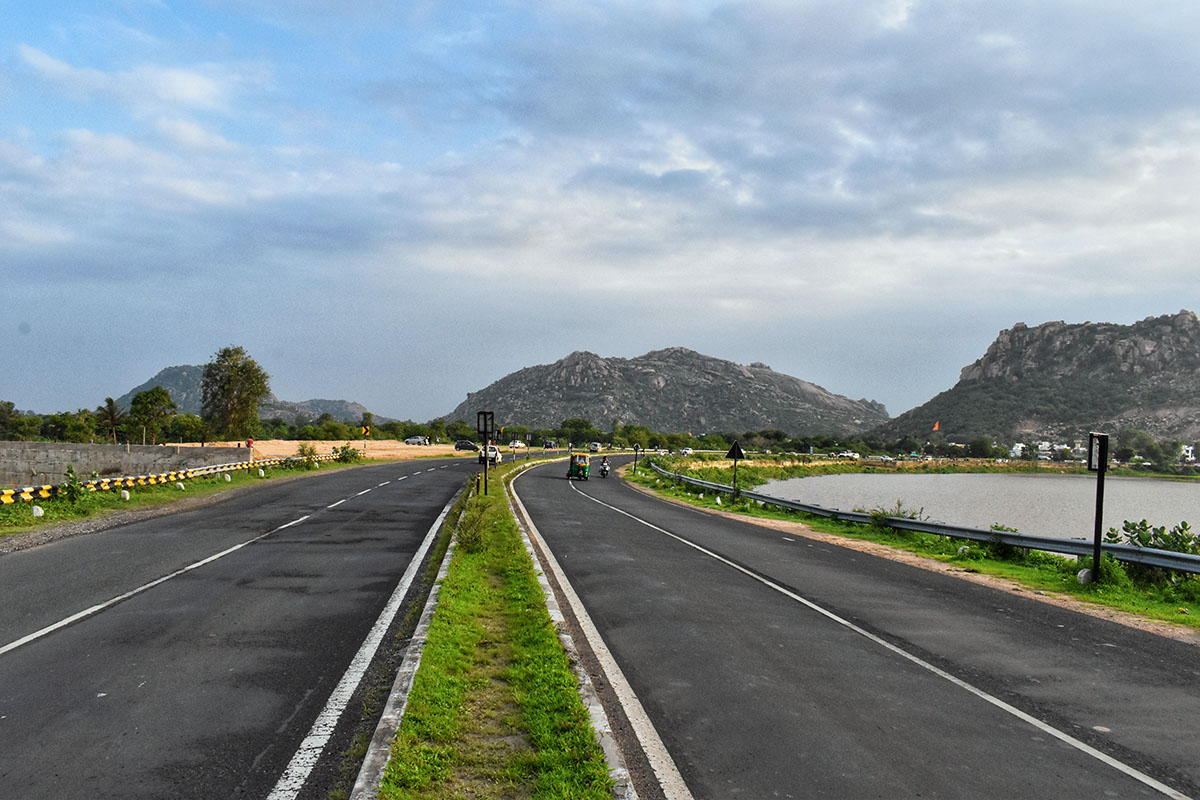
Idariyo Gadh as seen from the highway
After my local friends found out about my Idar trip, they asked me, "what's there in Idar?" It didn't surprise me because when I was searching for hotels in Idar, there were only a few options nearby. My wife came to my rescue and arranged for an AC room in the guest house of the famous Pavapuri Jain Temple. That was quite an achievement considering it was pilgrimage season and the place was quite crowded. So, getting an AC room during a summer-like tourist season in Gujarat was a blessing for us. The most beautiful part about staying there was that the temple is located right in the heart of nature, a tranquil part of Gujarat. Pure bliss for us!
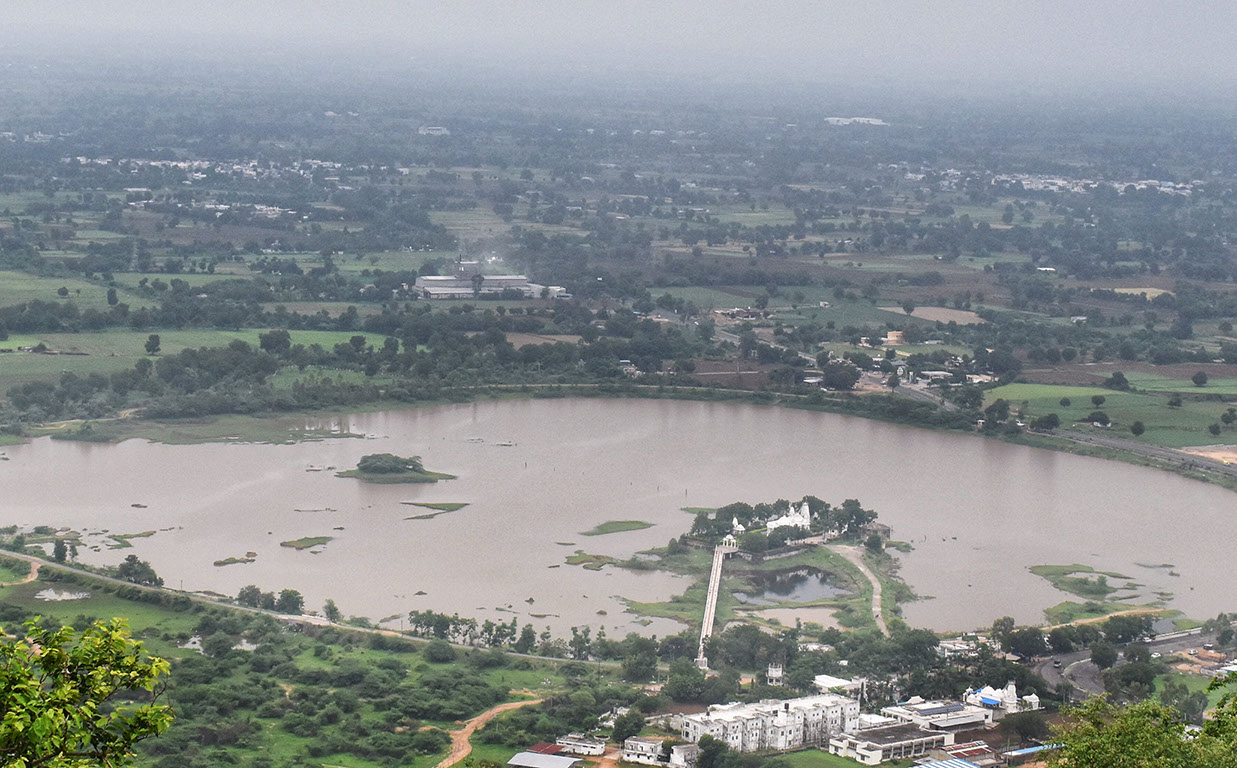
An aerial view of Pavapuri Derasar in the middle of Rani Talav
A breathtaking view of the surrounding area can be seen from the main temple shrine of Mahavir Swami, which was built in 2001 in the middle of Rani Talav (the lake). The lake covers 94 acres and is home to many species of waterbirds. The lake was constructed in 1488 by the queen of the then king Rao Bhana and hence is known as Rani Talav (Queen's Lake). It's a breezy spot and a kind of hush seemed to settle around the place.

The placidity of the area lends a certain heavenly touch to the temple. It's perfect for reflection and meditation. The Guest house and temple are connected by a 400-meter-long footbridge. The footbridge offers a breathtaking view of Ruthi Rani no Mahal and Idariyo Gadh in the backdrop. As I strolled along the bridge and around the temple, I felt a sense of balance and was able to connect with myself.
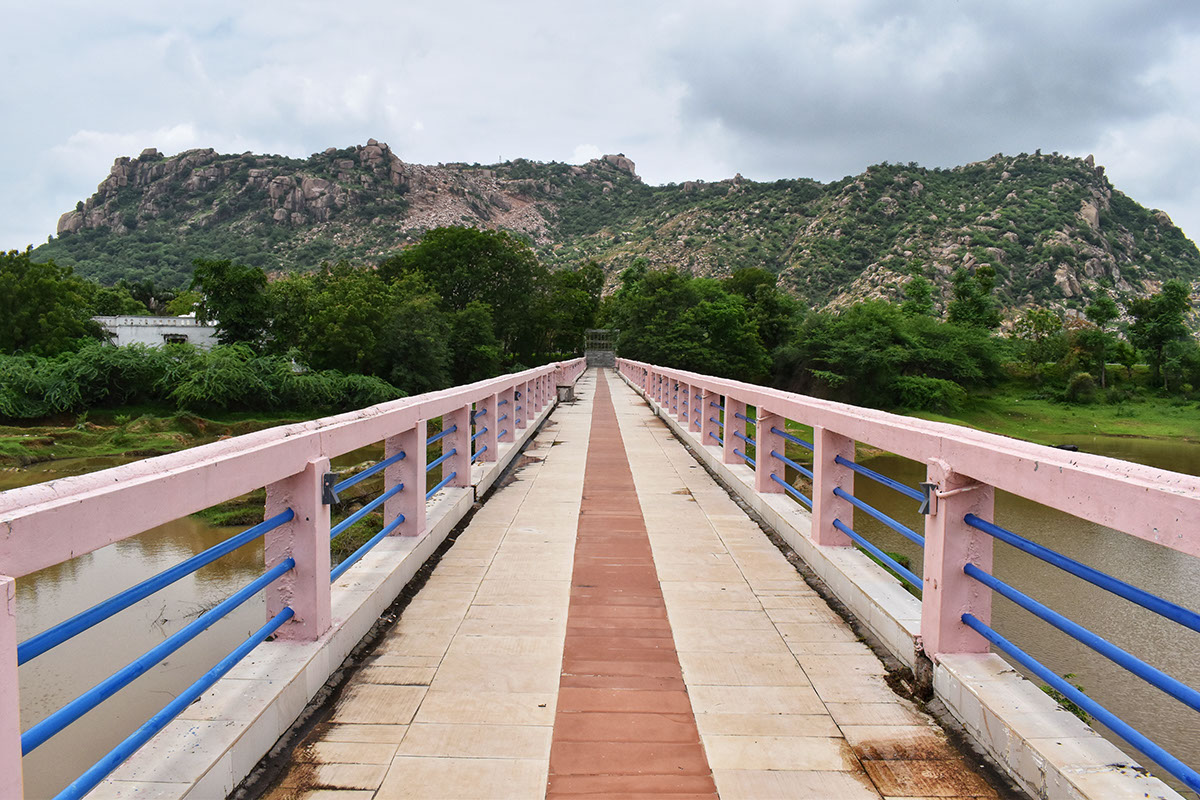
A panoramic view of Idariyo Gadh from the footbridge
The temple is 72 feet high and 72 feet long. A total of 72 pillars support the building. An idol of Lord Mahavir Swami, 72 cm tall, is surrounded by 72 carved figures of other deities. You may wonder, why 72? As Mahavir Swami attained nirvana at 72, it has become a sacred number in Jainism.
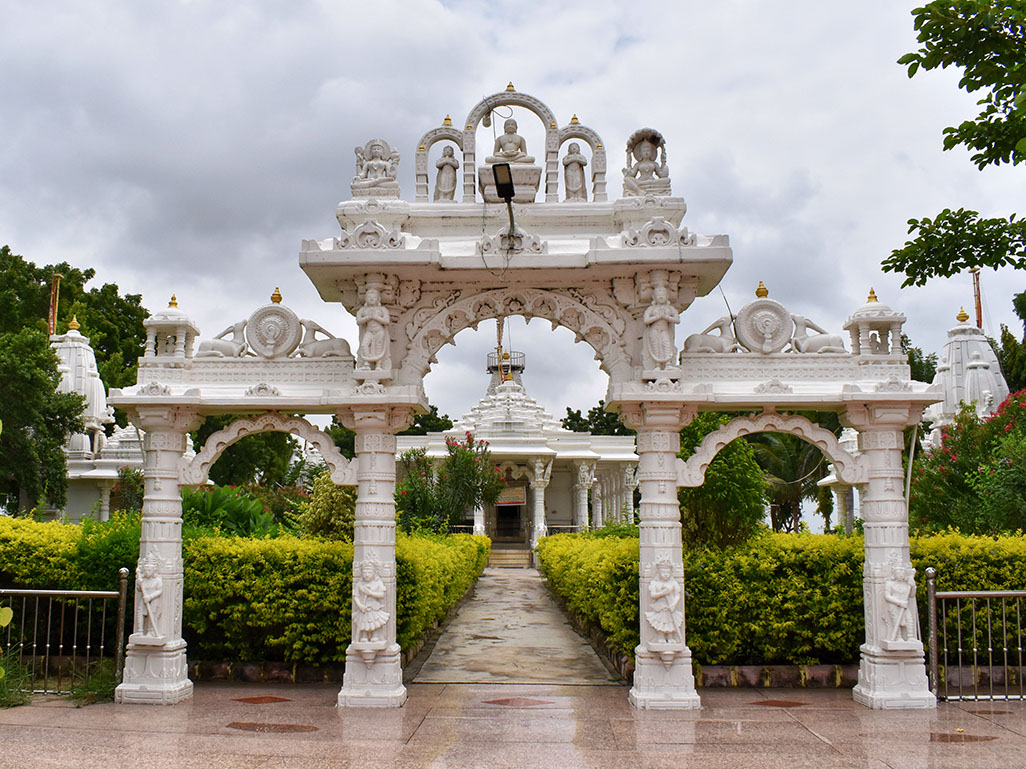
Beautifully carved temple entrance after crossing the footbridge
There is a mention of the ancient city of Idar in the Mahabharata. However, the exact year of its establishment remains a mystery. Before being known as "Idar", it was known as Ilaprad, Iyandurg, and Iyadprad. According to history books, Veni Vachh Raj ruled Idar in the year 870, and he built the fort atop the mountain. He was married to Nagaputri (the daughter of a snake king). A strange legend has it that the queen and the king both made their way to the hill of Taran Mata after the queen realized that humans were immortal. Mysteriously, after that, they were never seen again.
It was then owned by Bhils, a tribe of excellent archers, in the year 1000. The Rathore dynasty, the Rajput warriors of Rajasthan, conquered Idar in 1257, and it became a princely state of India till 1948. There were 1624 villages in this extremely rich state. Rathores ruled Idar for 12 generations until 1656 when they were defeated by Mughals. Jodhpur's King recaptured it in 1729. A number of battles took place between Idar's capture by the Muslims and Marathas, as well as its recapture by the Rajputs at various points in history.
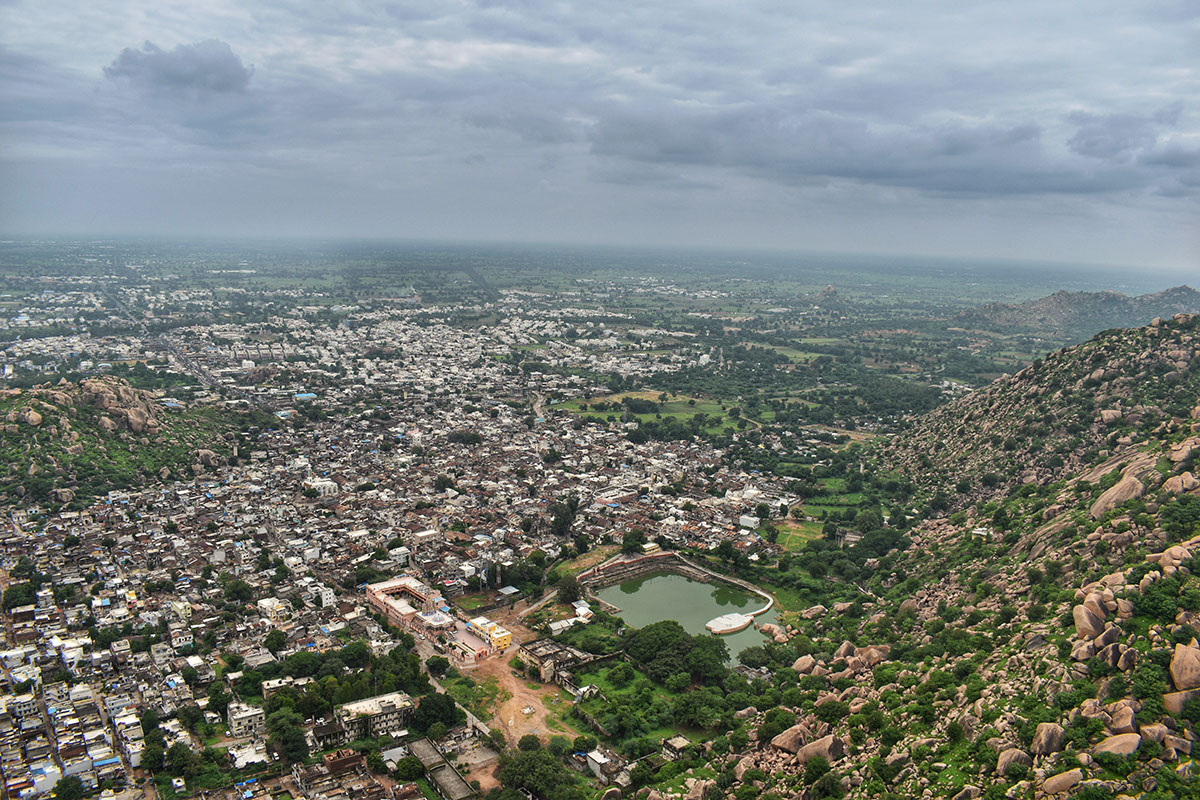
An aerial view of Idar city surrounded by the Aravalli mountains
Idar is a fortress city, surrounded by Aravalli mountains (older than the Himalayas) on three sides, with its main gate on one side, it was almost impossible to invade. In historical times when wars were rampant this was a major advantage to the city acting as a natural protective barrier to intruders. Idar was therefore extremely difficult to conquer, and capturing this state was every ruler's dream. Capturing Idar became a pipe dream for many royals and for sometime it seemed like the only thing many rulers lived for. This yearning all through history left a lasting impact on the people of Idar which led to the creation of a folk song "Idariyo Gadh jitya re...". The Sultan of Ahmedabad, Nasiruddin Mahmud Shah conquered Pavagadh and Idariyo Gadh, the toughest fortresses in Gujarat during his reign in 1458 and 1513, and hence he was known as Mahmud Begada. In Gujarati, "Begada'' refers to someone who conquered two Gadhs (mountain forts). Sadly, nearly the entire town of Idar was destroyed by him.
Idar is also famous for its extreme summers and unbearable temperatures. Therefore, despite being in the middle of monsoon, the humidity had taken hold of the city, so to avoid the extreme heat, I decided to explore Idar and visit Idariyo Gadh early in the morning at 6 am. There are two ways to reach the top. A long flight of stairs (about 800 steps) or steep and curvy roads are your options. I decided to climb all the way to the top. Unfortunately, my wife could not join me. The day being a weekday prevented her from joining me since she works from home. Following the directions from the Jain temple staff, I parked my car near the Swaminarayan temple at the base of the hills. It's a safe place for tourists to park their vehicles.
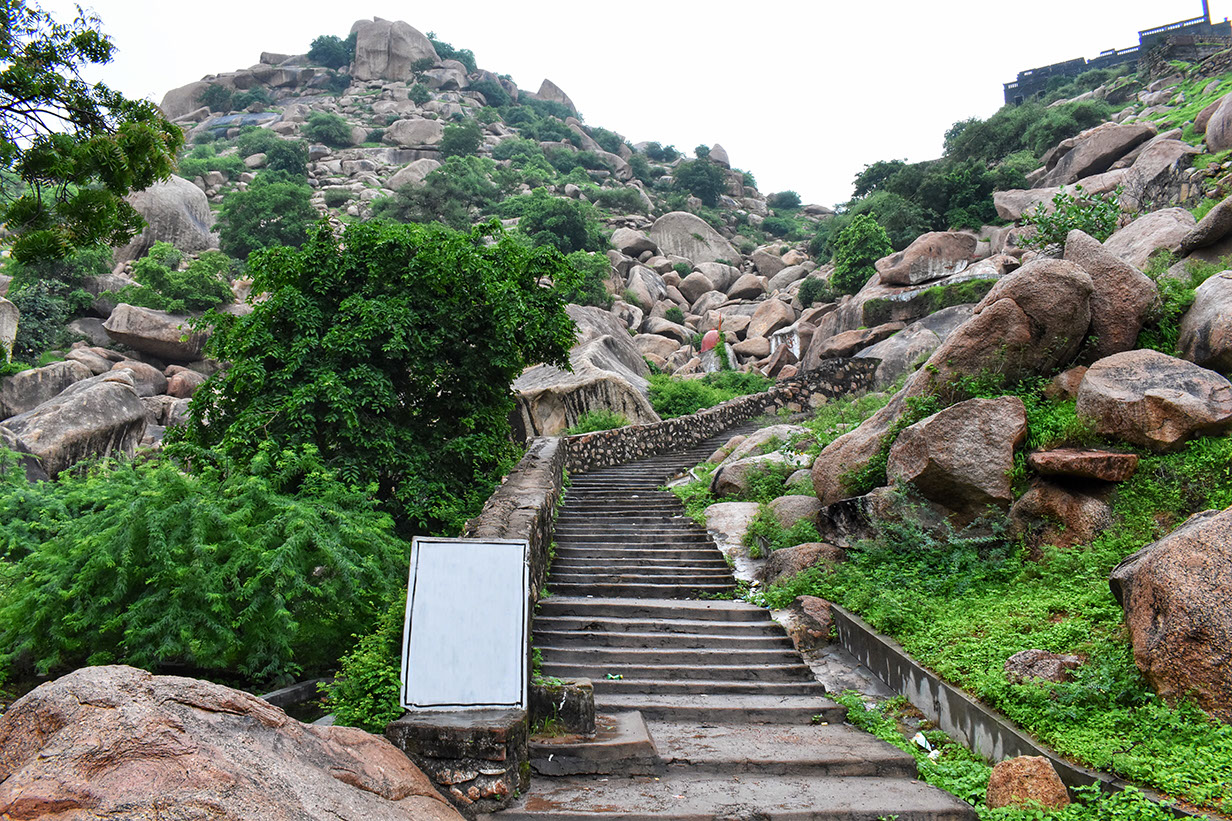
The base from where you start climbing Idariyo Gadh
I started my climb in intermittent drizzle on a foggy beautiful morning. But, I had to be extremely cautious as there was no one around and I'd heard a few leopards live in the hills. There was a sense that the place possessed a personality of its own, surrounded by thousands of years of rock formations that embraced it in a blanket of silence. Gradually, the sound of birds broke the morning and I knew that the drizzle would cease soon. As I meandered through Idariyo Gadh, absorbing its magnificence, I felt each rock whisper a story of its history and its solidarity. The entire gadh was shrouded in clouds, with visibility up to 30-40 steps. I was just a few minutes away from the city and yet here I was in a heavenly setting. I was so caught up in the moment, that I actually considered lying down atop one of the rocks to enjoy the drizzle splashing on my face, the kid in me had taken over. Slowly, the drizzles stopped and the clouds dispersed. I got my camera out, it was time for some awesome photography.
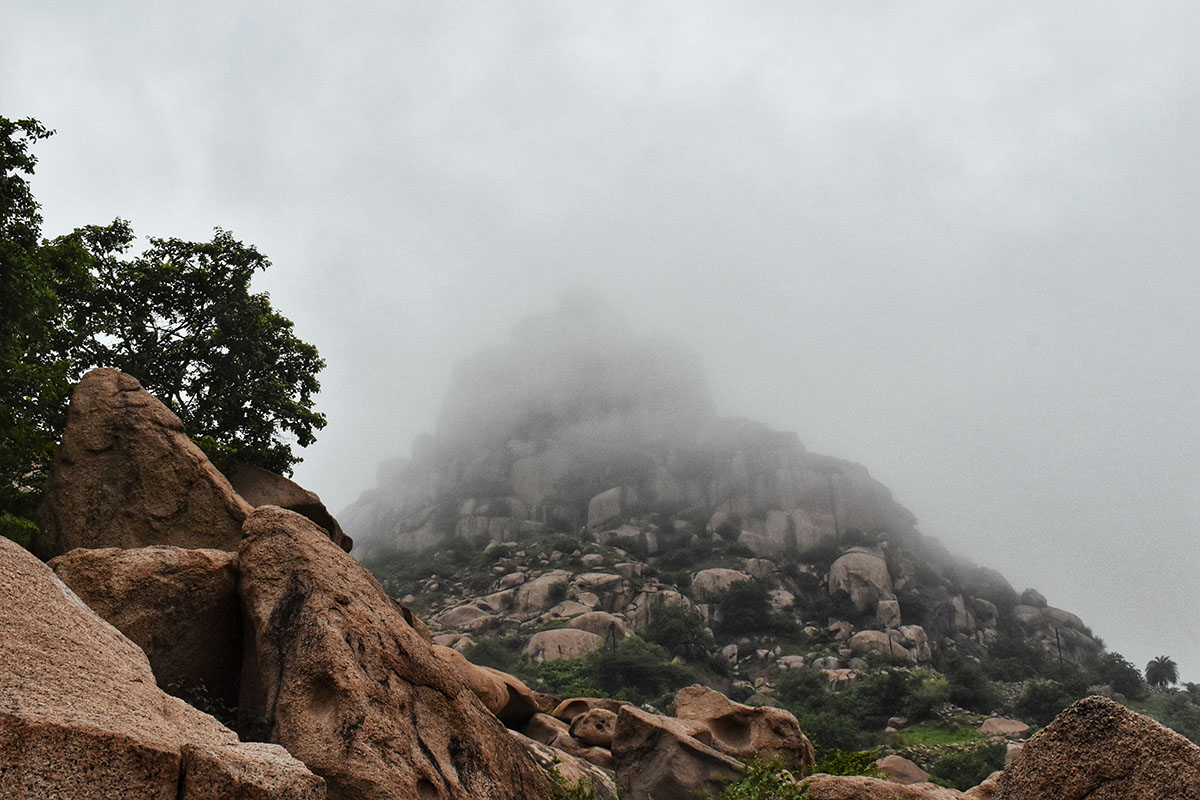
The early morning hours are mostly cloudy at Idariyo Gadh
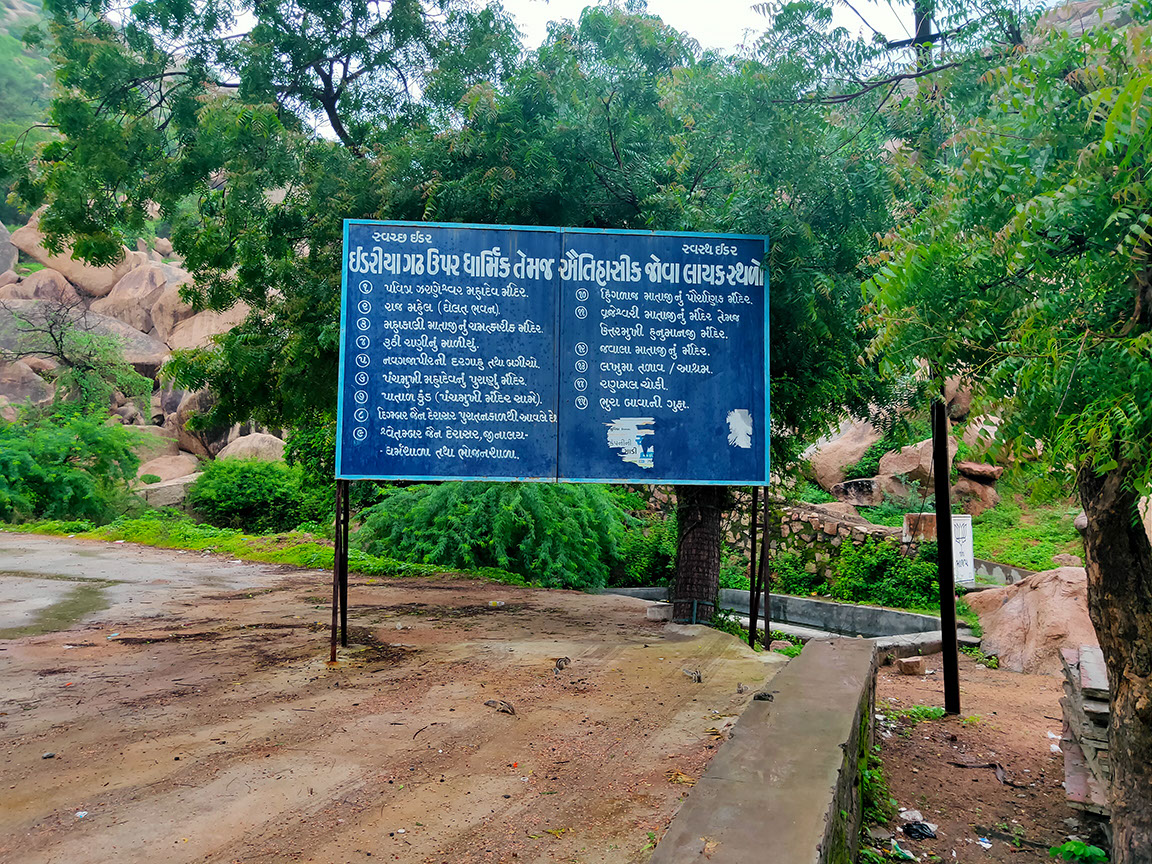
Information board in Gujarati that lists tourist attractions
As I ascended, the views behind me became increasingly beautiful with the city partially covered in clouds. There were scattered sign boards that had historical information and guidelines on places to visit. My mind was racing with questions, but there was not a single soul in sight and I didnt know who to ask. Tourists with DSLR cameras strapped to their necks are not common in Gujarat, especially in smaller places like Idar. Inquisitive locals usually perceive you as a journalist on first impression. There are even those who attempt to be clicked in anticipation of seeing their photo in the newspaper the next day. It made me nervous to keep my camera hanging on my neck all the time. I was deep in contemplation and suddenly a voice in a typical Mehsana Gujarati accent came from behind "what is your passion, nature photography or history?"
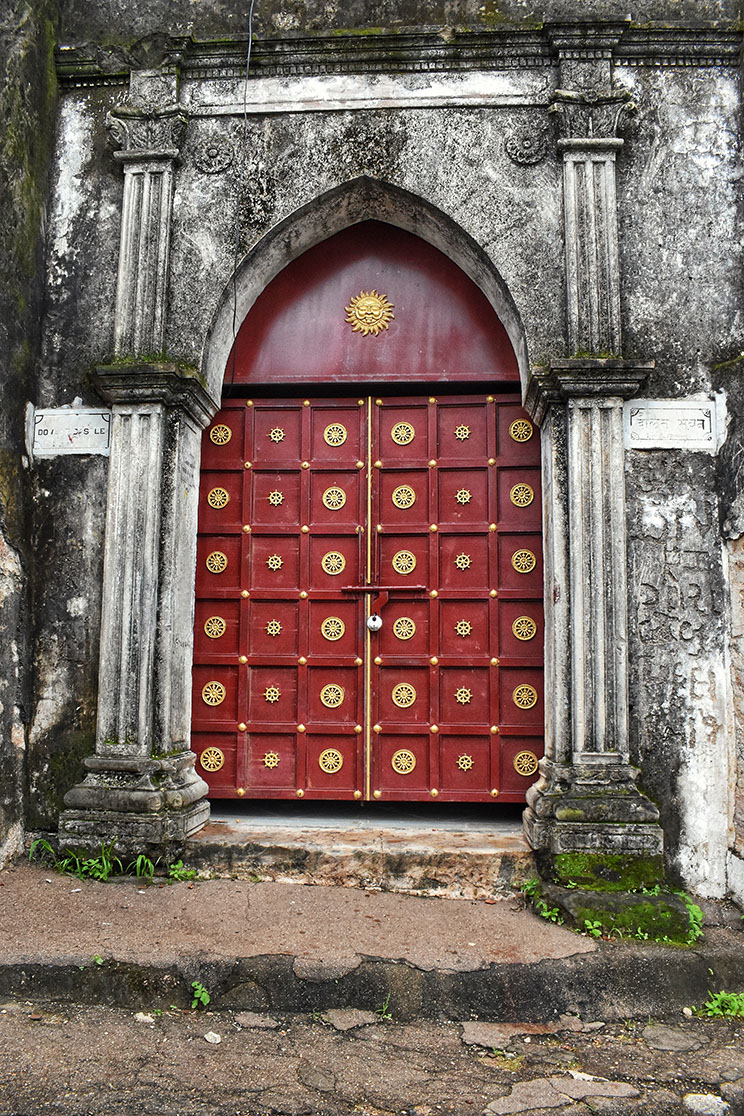
The renovated gate of Daulat Mahal (the palace) - protective barrier to prevent common people from going beyond this point
He was Dr. Jigar Doshi, a famous dental surgeon in Idar and a Jain devotee who climbs Idariyo Gadh every day to visit the Jain temple. He was thrilled to hear that I would be writing a travel story about Idar and offered to be my guide. He seemed surprised to meet someone from Bangalore that speaks Gujarati fluently (albeit with a different accent) with a strong quest to explore and write about a small place like Idar. This unexpected acquaintance just delighted me and was desperate to gain a local's perspective as that's what translates your writing into a great travel story.
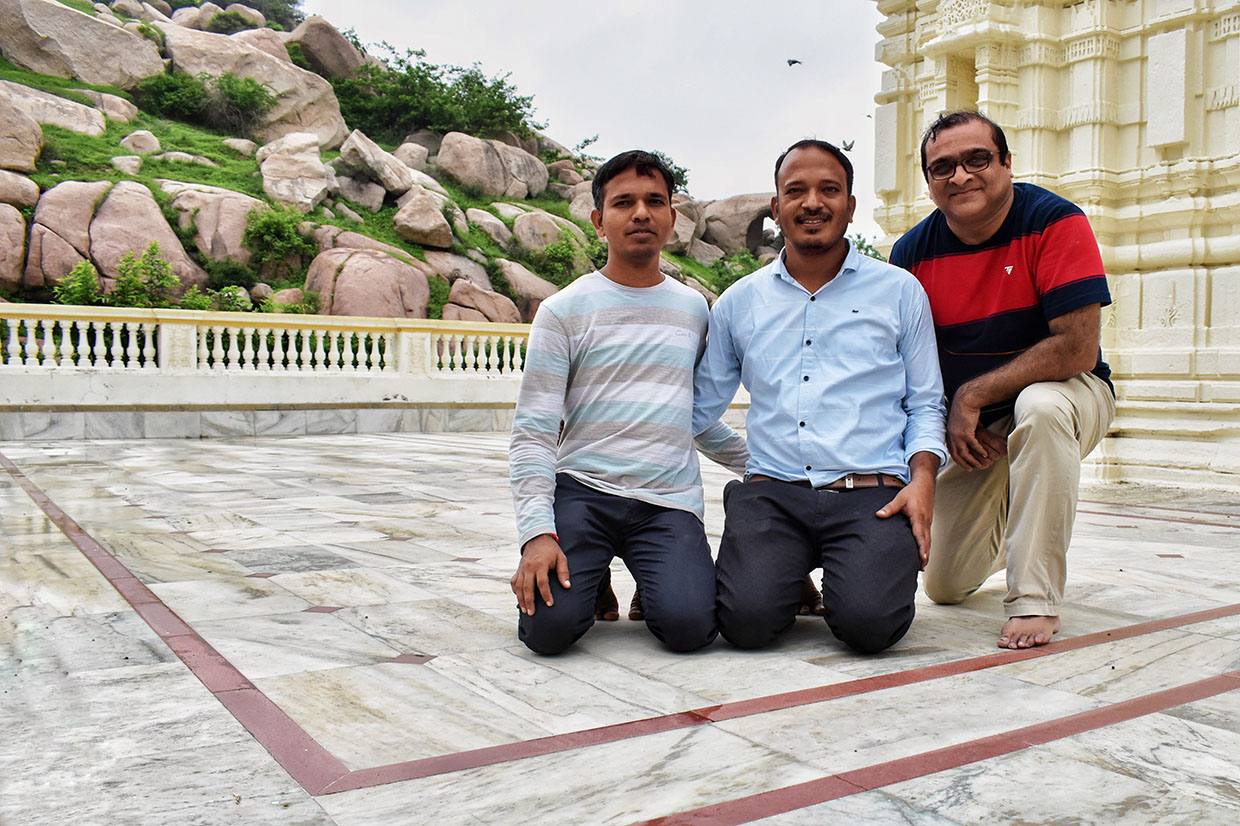
With Dr. Jigar Doshi (center) and his brother Akash Doshi (left) at Digambar Jain temple
During our walk, he told me many intriguing details about Idariyo Gadh and took me to several interesting locations. If I had been on my own, I would have surely missed them. At the Veni Vachh Raj Pond, Jigarbhai (that's how Gujaratis address each other to show respect) spoke at length about an endangered plant called "Tadhodi" that was seen growing there. Apparently, this plant grows only in the Himalayan mountains and the locals find it quite mysterious that it also grows in Idar where the weather conditions are a complete contrast. The plant Tadhodi is quite popular for its medicinal properties. It is known to help cure migraines by placing its leaves under the feet and on the head as it absorbs the body's heat. I have been trying to find out the English or Ayurvedic name of this plant, but so far I have not been successful. Another interesting feature of this pond is that its water never recedes.
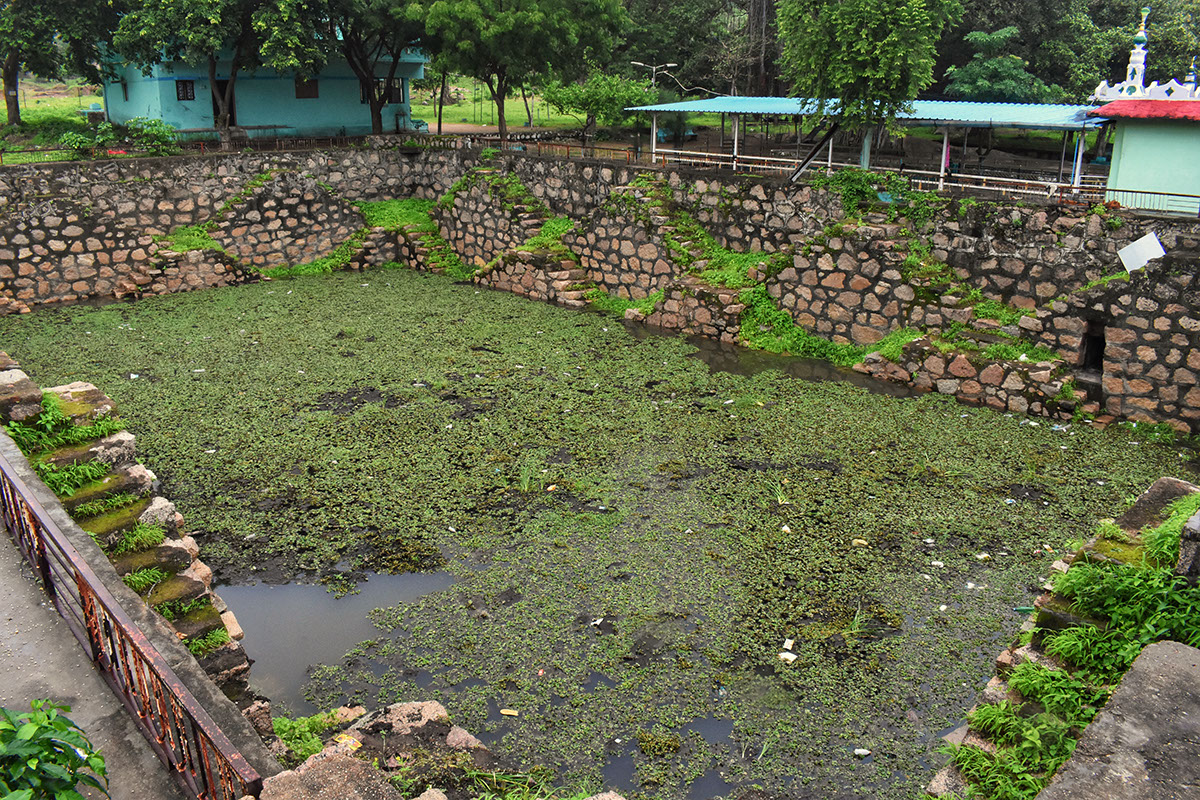
Veni Vachh Raj Pond, also known as "Patal Kund" looks like it was a stepwell of the yesteryears and is filled with "Tadhodi"
After this, my newly found guide took me to Lakhuma Lake, where a saint named Lakhuma had lived for 60 years. Over the course of 20 years, he built the entire lake from a small pond. On the side of the lake are three temples, Lord Shiva temple, Goddess Vrajeshwari Mata temple, and Goddess Hingraj Mata temple. For the carving community of Idar, Panchal, Vrajeshwari Mata is a clan temple. This community is famous for their carving skills and making of toys. They have inherited these skills from their ancestors over centuries.
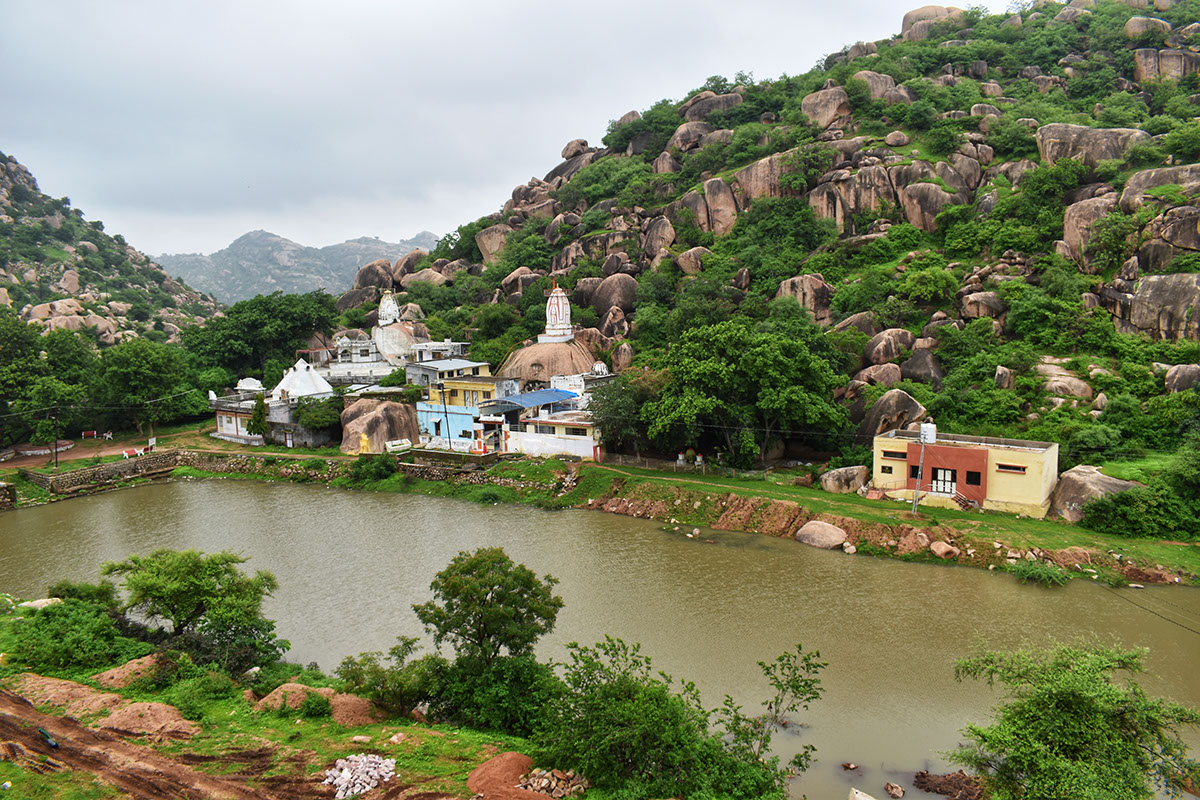
Lake Lakhuma and its surrounding temples
The mountain is home to two prominent Jain temples with a 1,600-year history. They belong to both the Shwetambar and Digambar denominations of Jainism. These temples date back to the Maurya dynasty of Magadha Kingdom. There are multiple accounts of temples being destroyed and rebuilt.
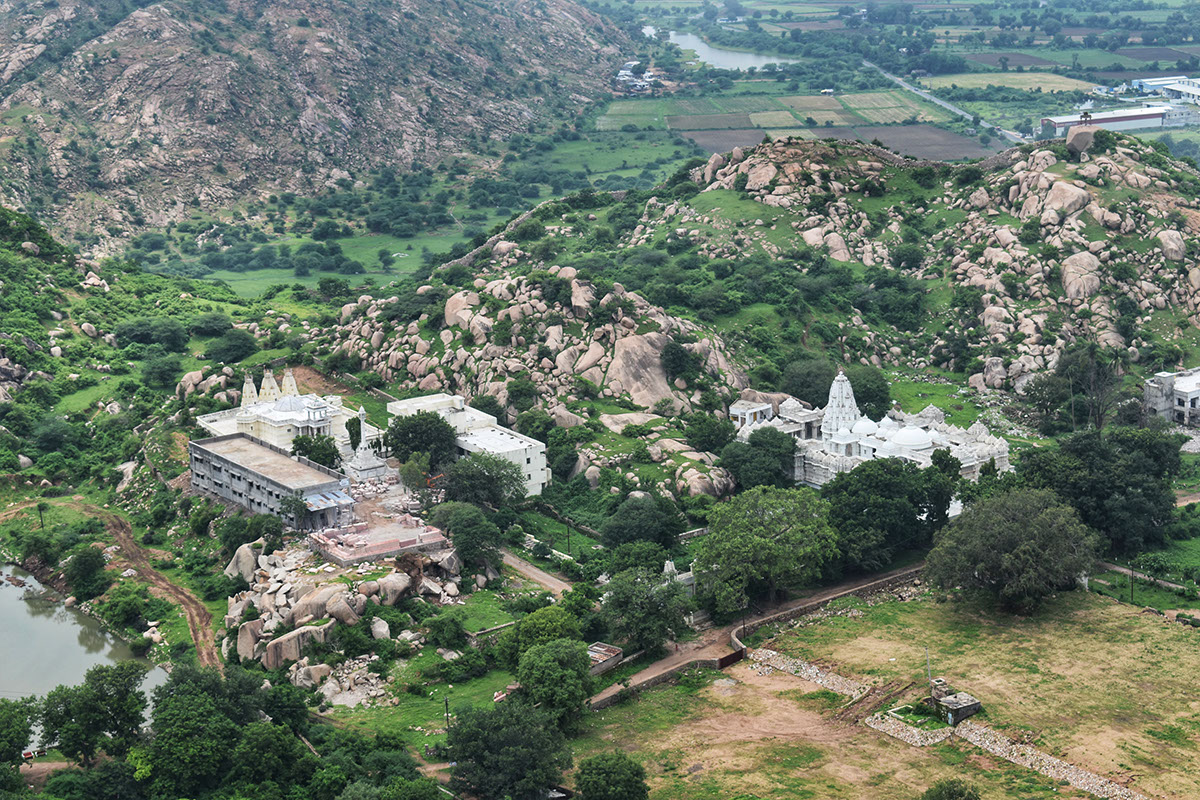
An aerial view of the Shwetambar temple (right) and Digambar temple (left)
Jain temples are renowned for their exquisite carvings on marble stones. They take many years to construct or rebuild. The current edifice of Shwetambar temple was constructed around 1750 and that of Digambar temple around 1805. I consider myself more than fortunate to have been able to accompany Jigarbhai to capture the grandeur of the Jain temples, even though photography is not permitted inside.
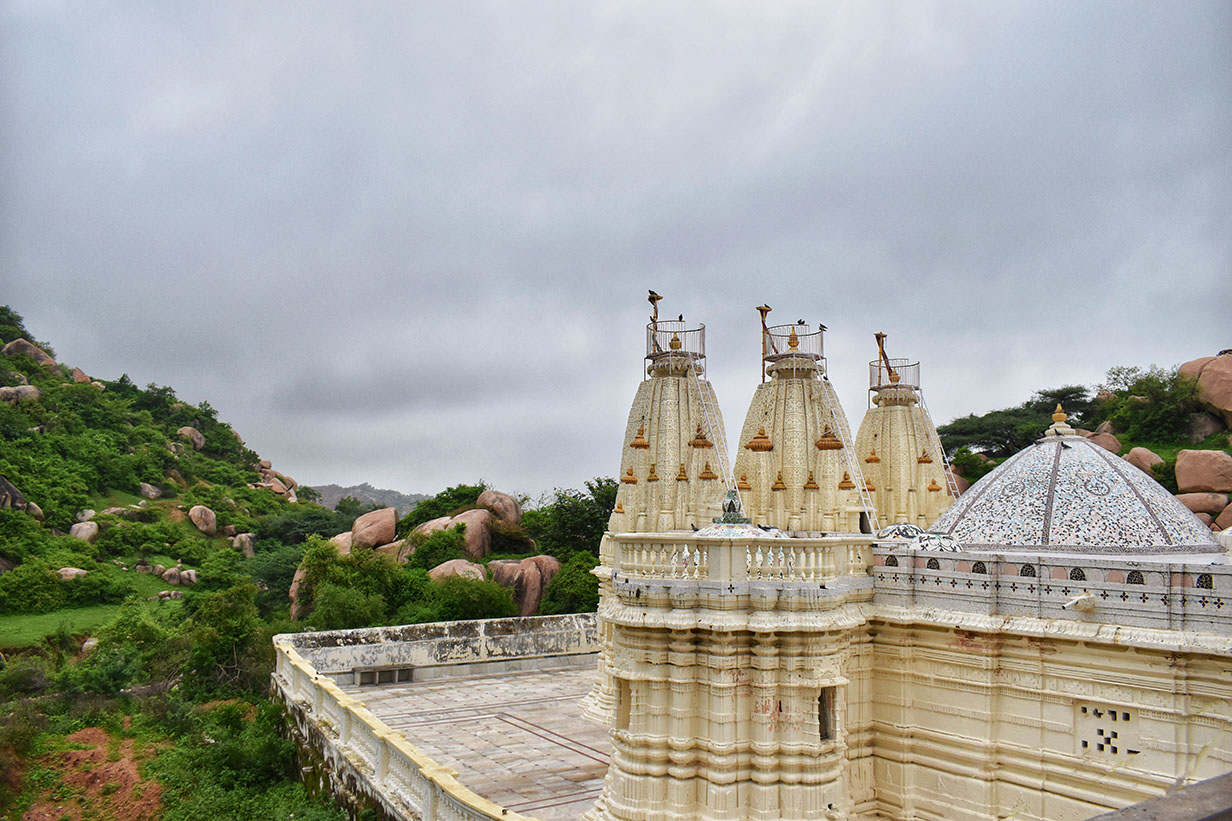
Digambar temple houses the statue of Lord Sambhavnath, the 3rd Jain Tirthankar (spiritual leader)
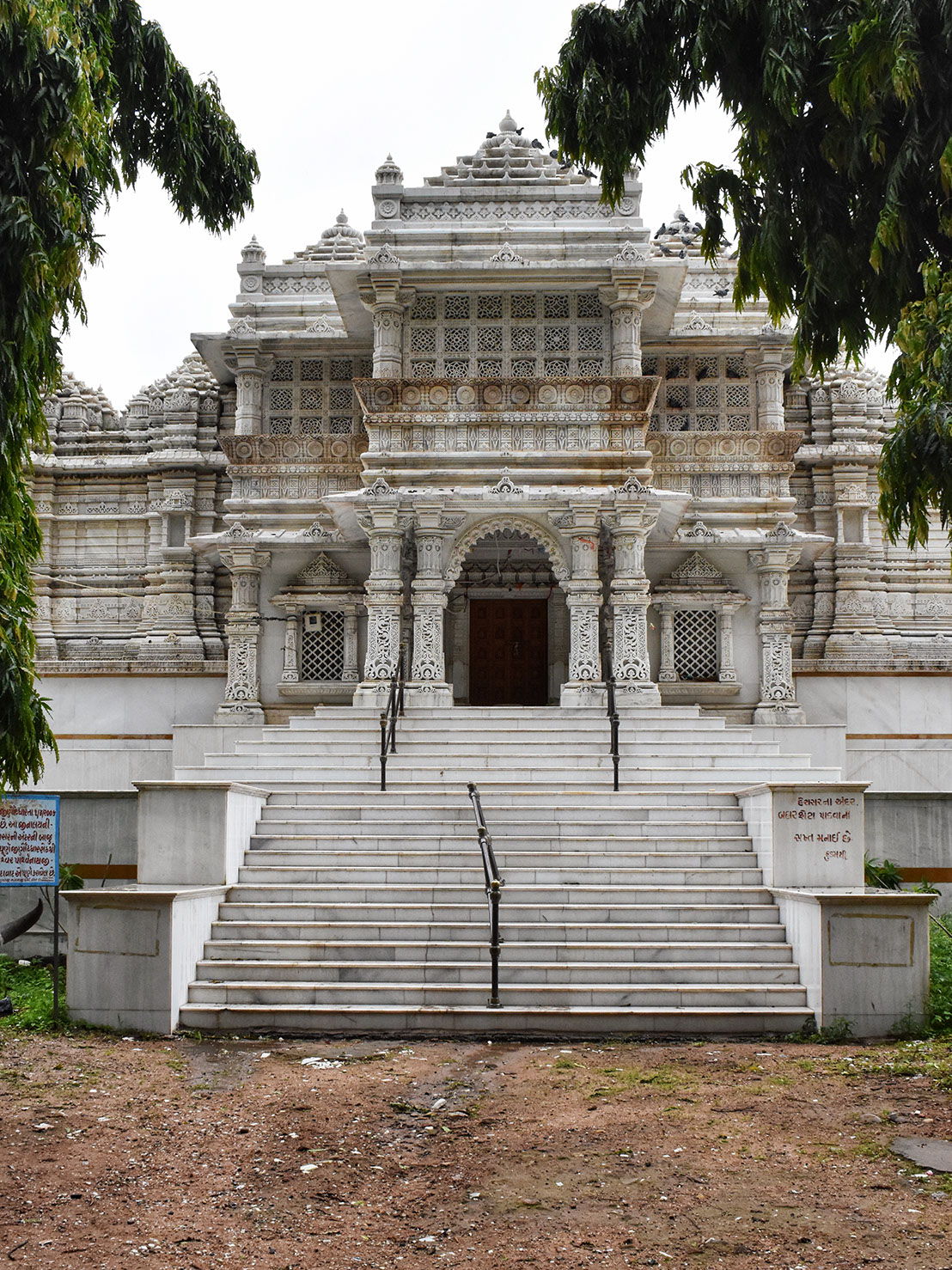
An entrance to Shwetambar temple that houses the statue of Lord Shantinath, the 16th Jain Tirthankar (spiritual leader)
Idariyo Gadh is home to a few hundred peacocks (Indian Peafowl). The attractive bird is known for its outstretched tail and various rustling sounds it makes, which can be heard from quite a distance away. Scientists have aptly named it "train rattle." I was thrilled to watch the male birds spread their tails in a fan shape and strut back and forth while shaking their feathers during their mating calls. Typically, this occurs during the monsoon season. Before I could mount my telephoto lens to capture it, the dance had ended.
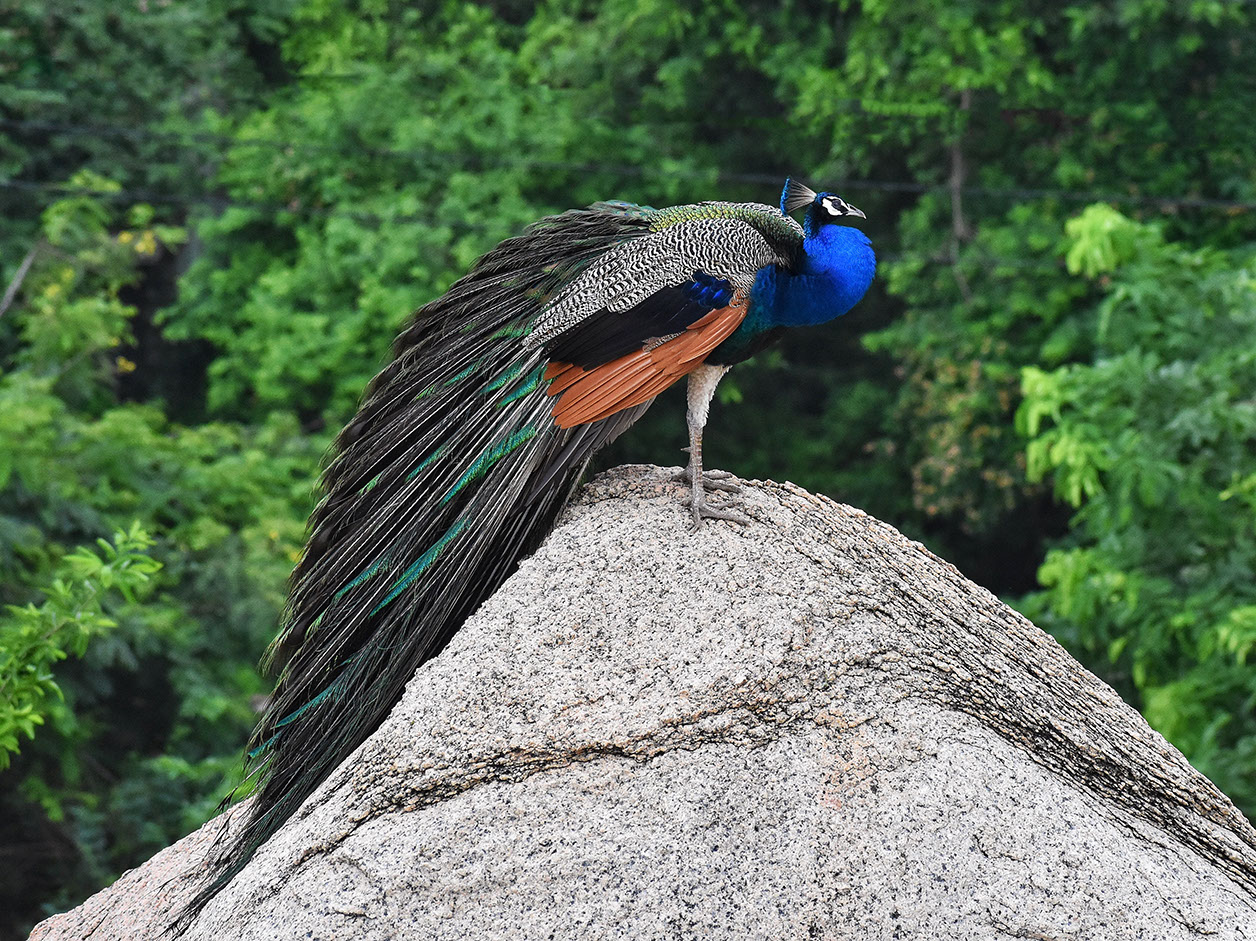
In Idar, peacocks are the bewitching beauty
In the distance, I spotted a few structures mounted on large rocks with umbrella-shaped domes. According to Jigarbhai, they are known as "Pavan Pavadi". Their purpose as watchtowers was to provide soldiers with a vantage point from which to observe enemy movements down the hills. Every tower has been placed strategically so that it covers the entire Gadh, one can see each other without obstruction, and can transmit information from one tower to another.
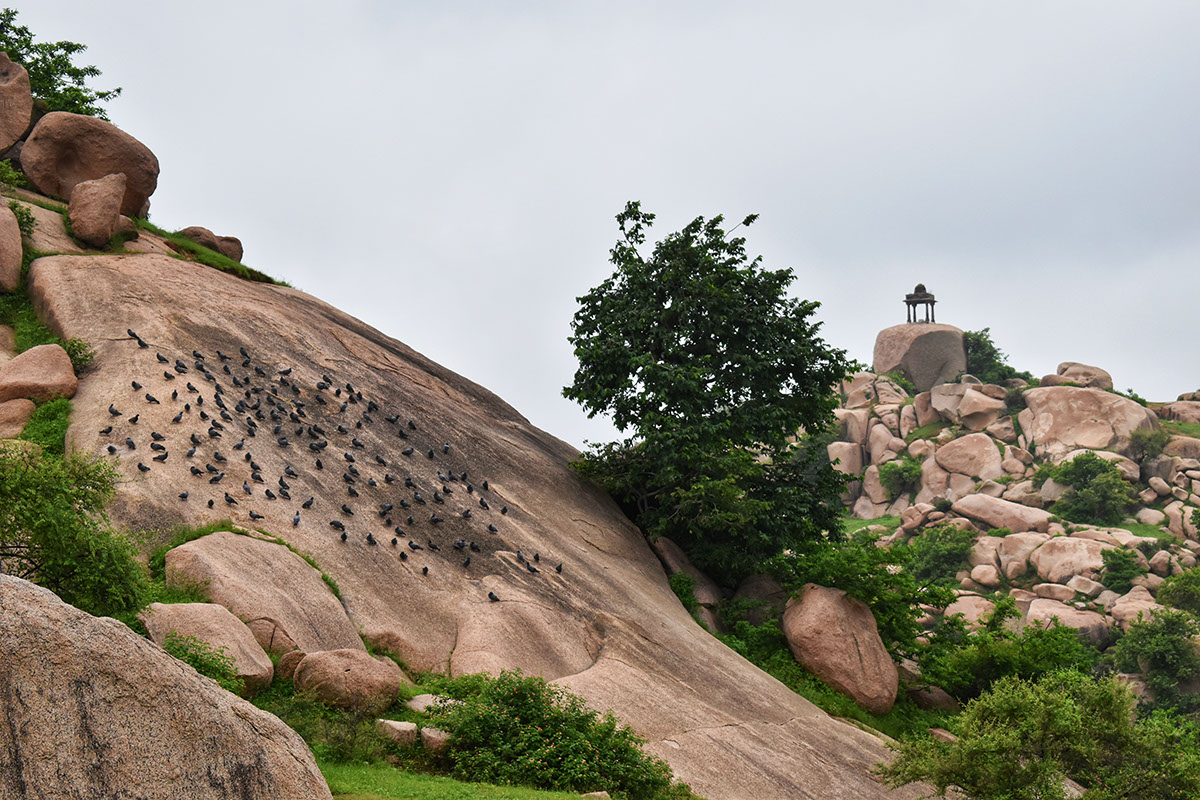
An imposing rock formation, "Pavan Pavadi" is like a watchtower
Jigarbhai, my serendipitous guide for the day, bid goodbye to me, as he had to attend to his patients. Before he left, he recommended some interesting treks like, "Ruthi Rani no Mahal", which was a relatively difficult climb. He introduced me to Kanubhai, the temple's housekeeper. He requested Kanubhai to accompany me for the trek in the afternoon. I was hoping the clouds would clear by that time as I needed some good clarity for taking pictures from the top. He also suggested that I should visit the ruins of Daulat Mahal, a magnificent palace (now in ruins) built by King Daulat Singh about 200 years ago.
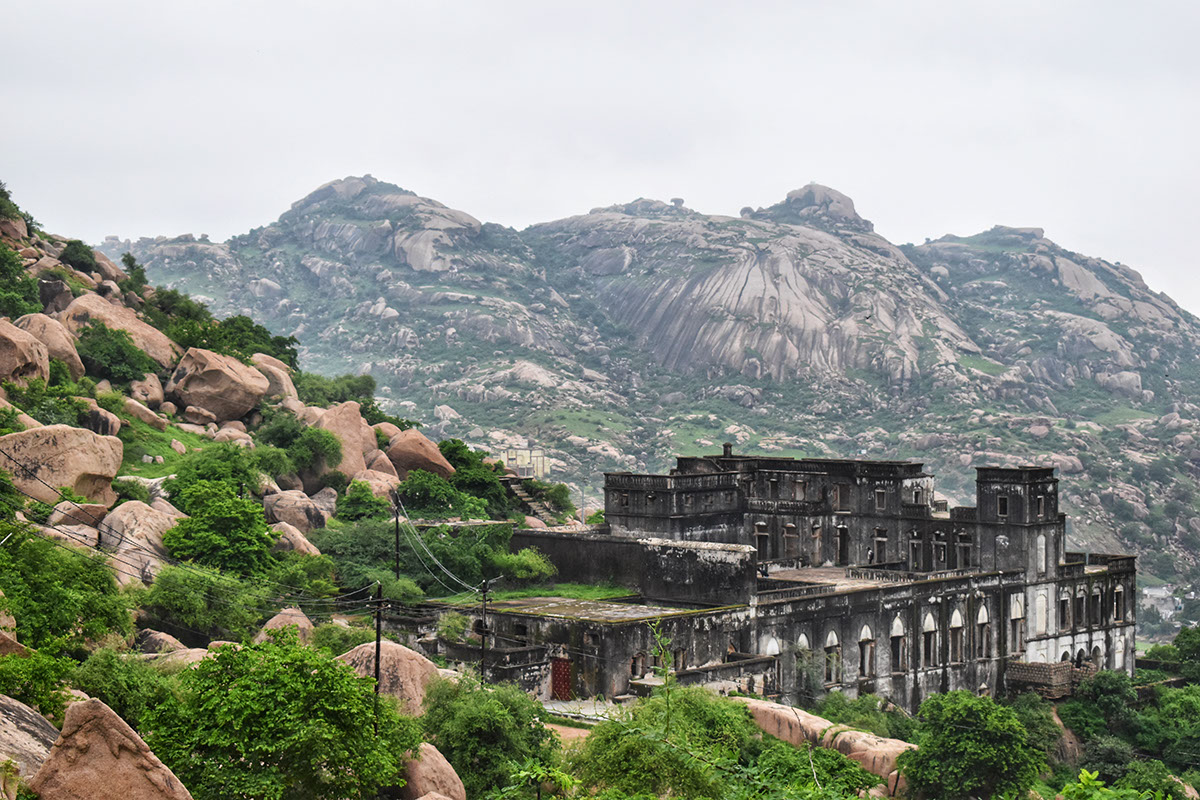
The ruins of Daulat Mahal
I was a bit petrified to enter the ruins as Jigarbhai mentioned he once saw a leopard scurrying away inside. The terrace had a few people on it, which gave me some courage to linger on and explore. Although the ruins couldn't speak of its past glory I could tell that the palace would have a resplendent interior during its prime.
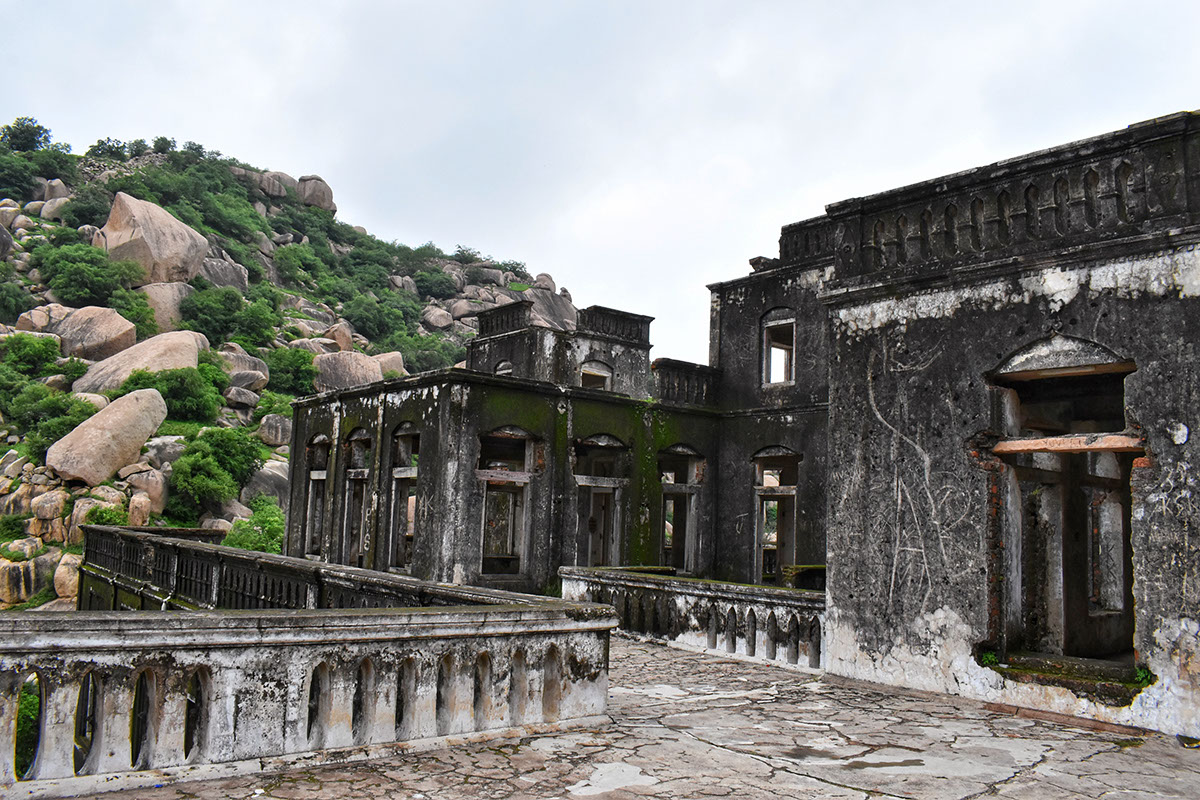
The terrace of Daulat Mahal
There is a breathtaking view of the entire Idar city below from the balcony and terrace. It is an iconic moment to be able to stand in one place and try to visualize the city's change through all the eras. By the time I was satiated with my photography, all the visitors had left, and I struggled to find my way out. As I meandered around the palace, I realized that it is quite a large maze and felt completely lost for a few moments. My heart was racing as I imagined an encounter with a leopard that I didn't want to meet. Soon enough, luckily, I saw a college student in the distance and asked him for assistance. He laughed and happily obliged.
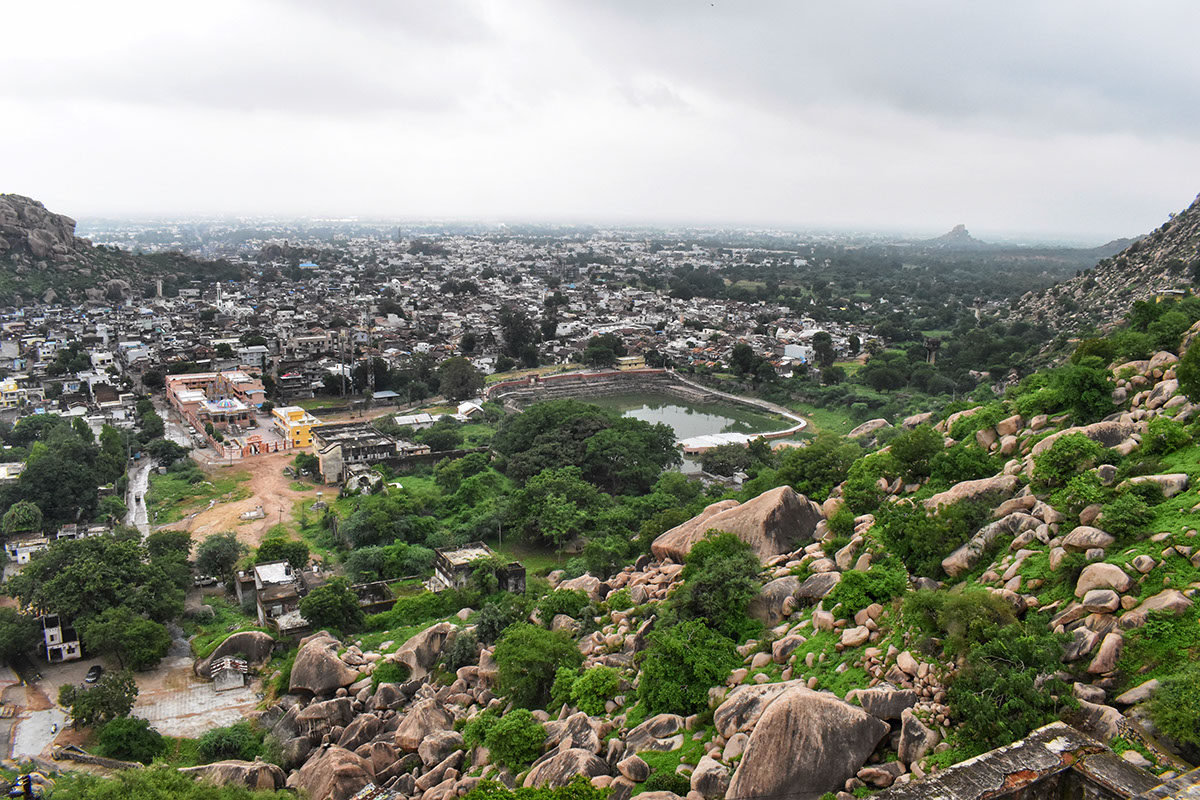
Panoramic view of Idar city from the balcony of Daulat Mahal
Kanubhai, my appointed guide for the afternoon, was waiting for me. He also operates a shop named "Sai Limbu Sharbat '' on the mountain to sell lemon juice (limbu sharbat in Gujarati), tea/coffee and snacks for tired travelers. It's quite a relief and his little venture has proven to be quite resourceful to the visitors of Idariyo Gadh. The sole outlet atop the elusive mountain is a magnetic relief for travelers. We began our climb up Ruthi Rani no Mahal (The Palace of an upset Queen) with fresh resolve. Kanubhai has a wealth of knowledge about the area and I was soon captivated by his endless stories.
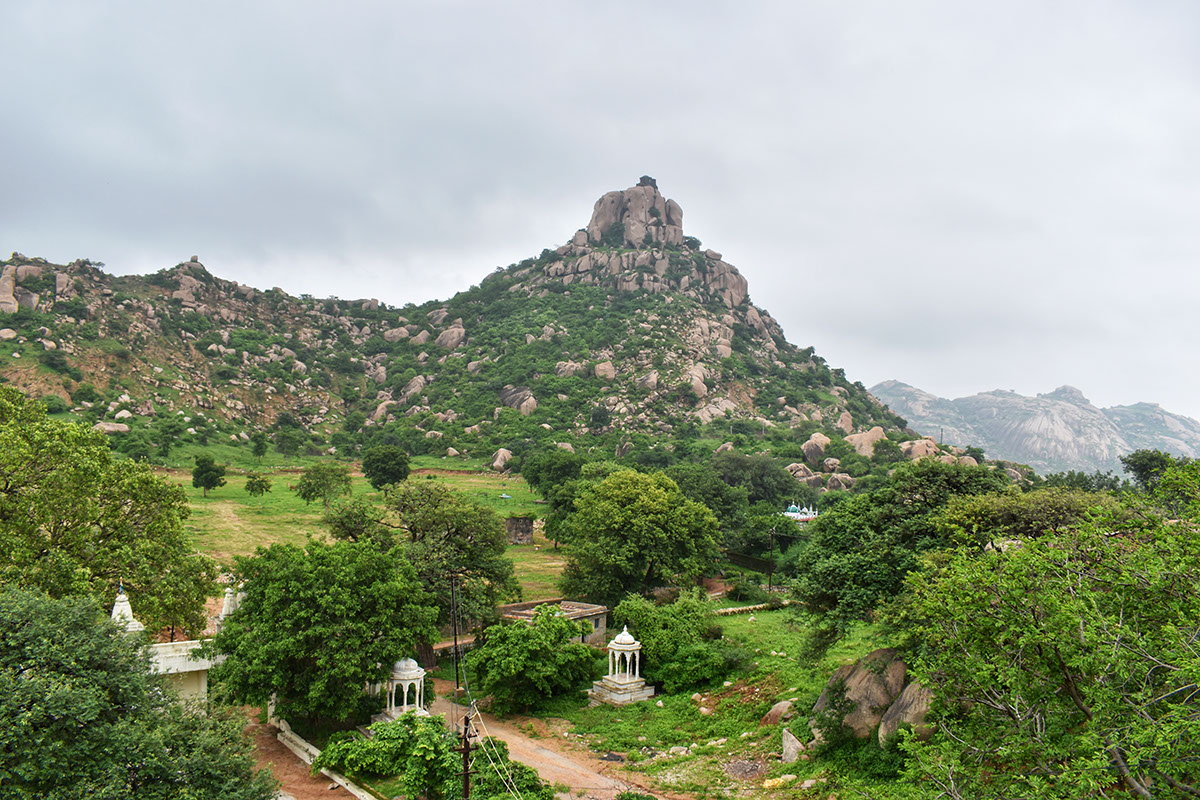
Ruthi Rani no Mahal atop a steep rock
There's an intriguing story to Ruthi Rani no Mahal. In 1573, Idar's King Rao Narayandas escaped to Polo Forest after losing a battle to Mughal King Akbar. The queen, while applying medicines to his wounds, made the quip that he will never be able to retake his kingdom. Angry at the situation, the King left the place, only to return after regaining his kingdom a few years later. He declined to see the face of his wife. The queen got upset and left the palace and moved to a small building atop the rock. The name of this building, where the queen often spent her time when she was upset, is the famous "Ruthi Rani no Mahal." I guess, you call it her 'quiet corner.'
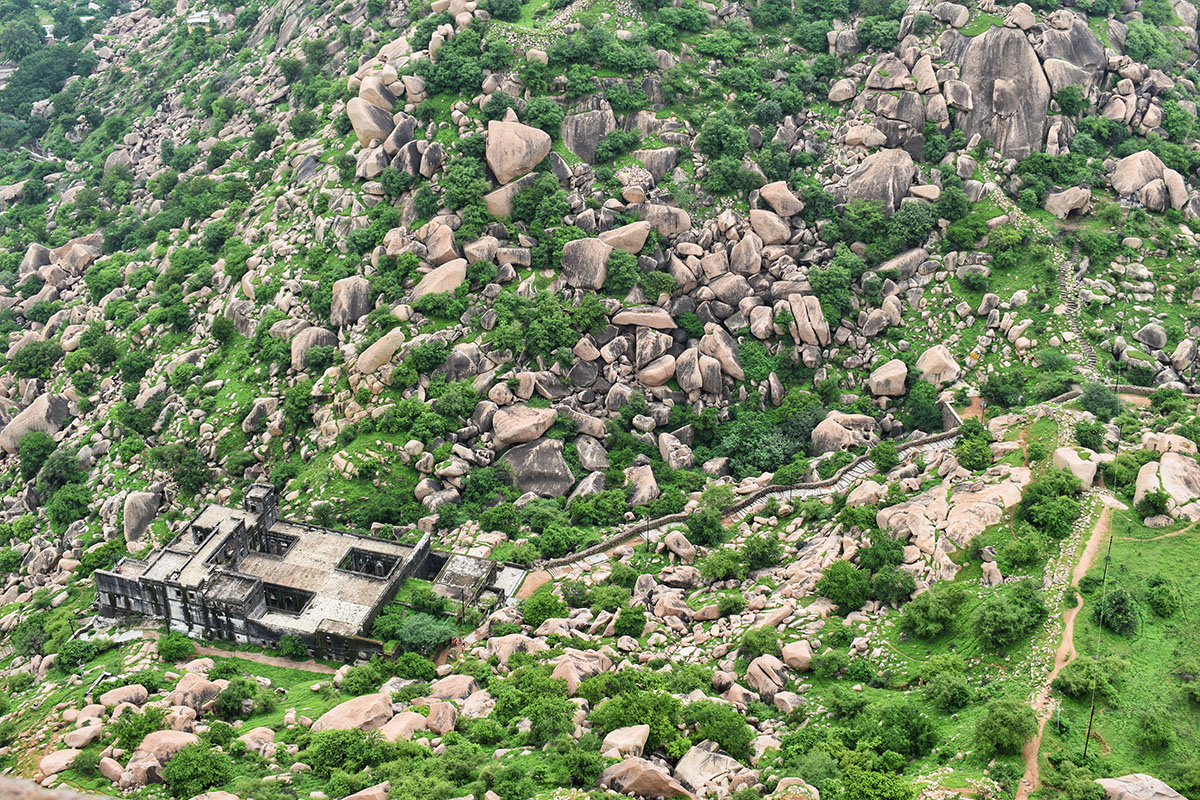
A bird's-eye-view of Daulat Mahal and steps to Idariyo Gadh from the trek
The trek didn't have a marked path, so you might get lost without a guide. The gradient became steeper as we gained altitude, and the trek became more challenging. Kanubhai was kind enough to hold my heavy camera bag for me. I forgot to bring a water bottle, and going back to get it was not an option. Luckily we stumbled upon the Gujarat Police who have set up a wireless repeater station midway through the trek. Kanubhai got me some water from the officer stationed there. I was really bogged down with fatigue, it was a tough climb for me. Getting the water at the right time was truly a relief and I'm glad Kanubhai turned out to be so resourceful. He cheered me through the last leg of the trek as he could feel that I was losing steam.
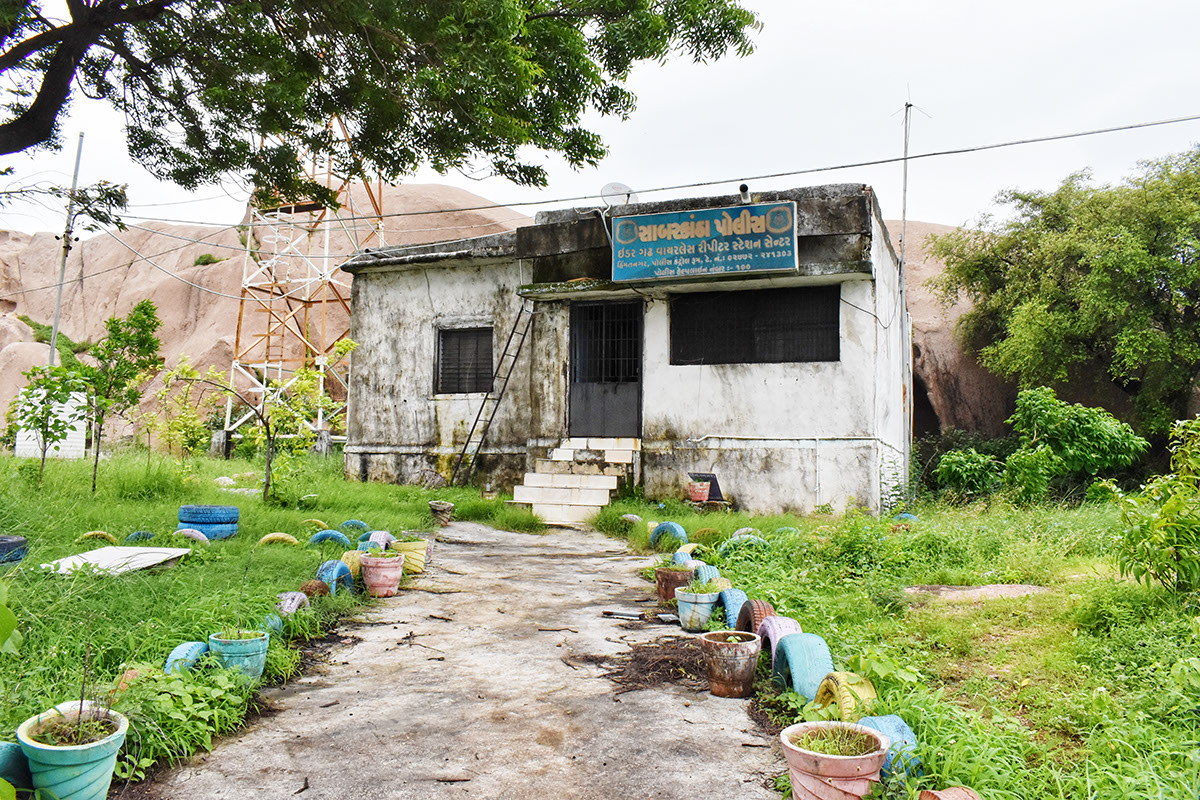
The police station and communication tower on the way to Ruthi Rani no Mahal
Every 100 feet we gained, the surroundings became more breathtaking. We eventually reached the base of the massive boulder after navigating the toughest part. As I turned the corner, I was gobsmacked to see the view on the other side. Rani Talav's mesmerizing green landscape captured my attention. As they rightly say, "A picture is worth a thousand words."
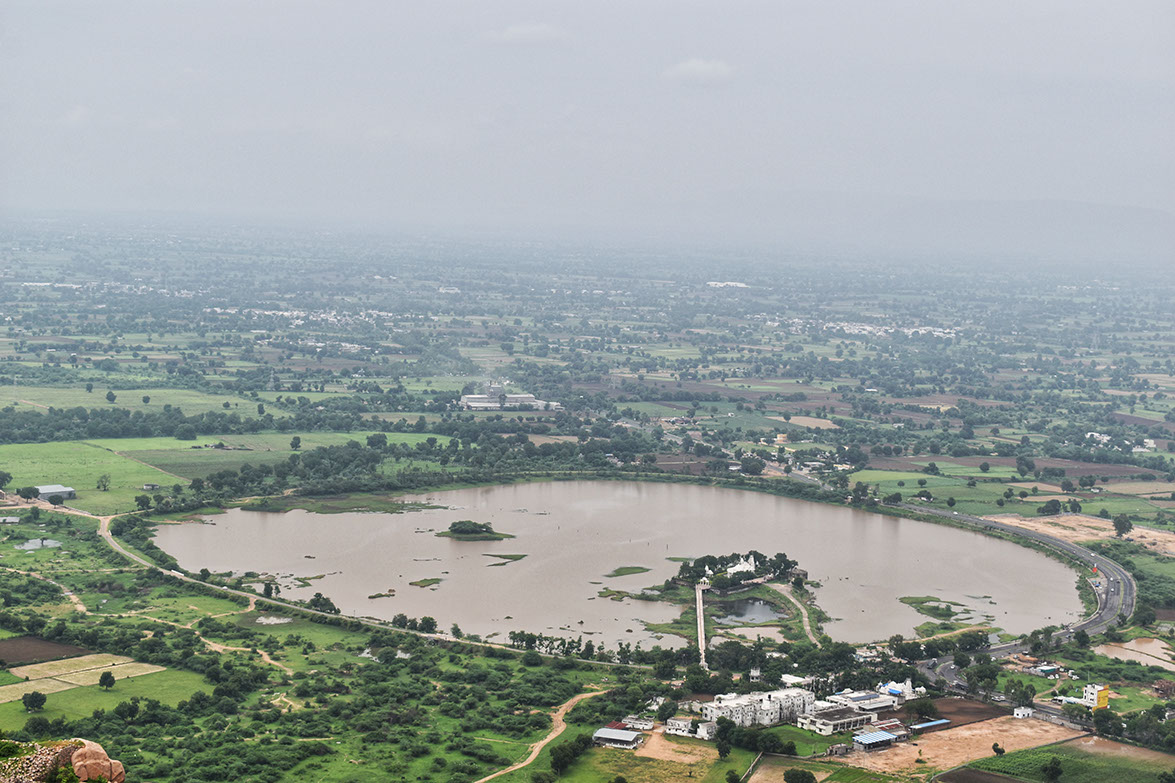
The panoramic view of Rani Talav
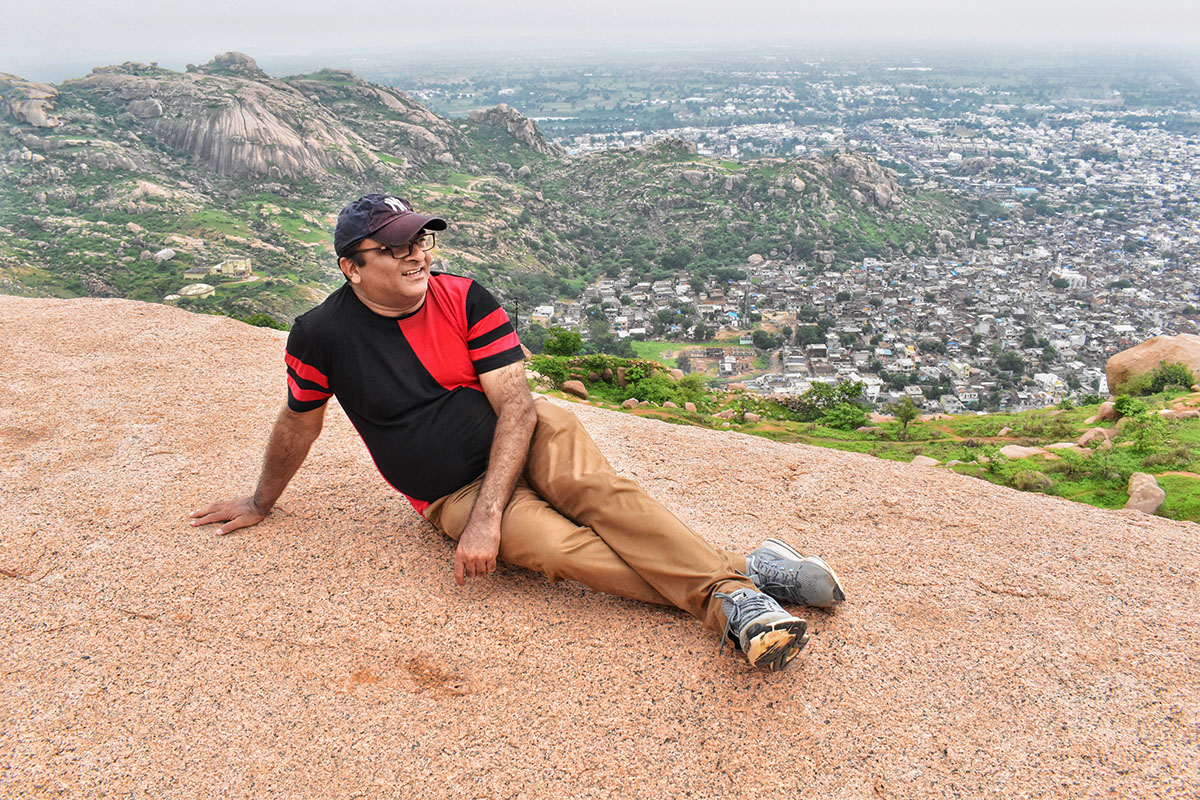
There's no place more beautiful to relax and take in the view after a 2-hour steep climb
It was quite challenging to climb the steep rock where Ruthi Rani no Mahal is located, but Kanubhai had a few tricks up his sleeve to make it less difficult. As soon as I reached the top, I felt satisfied that I had conquered Idariyo Gadh. I was blown away by the 360-degree view. Cloud cover would have prevented me from seeing the view in the morning. It was precisely because of this that Kanubhai suggested afternoon despite the heat. His foresight in the planning of the trek was commendable as I managed to get a breathtaking view and some absolutely unforgettable pictures.
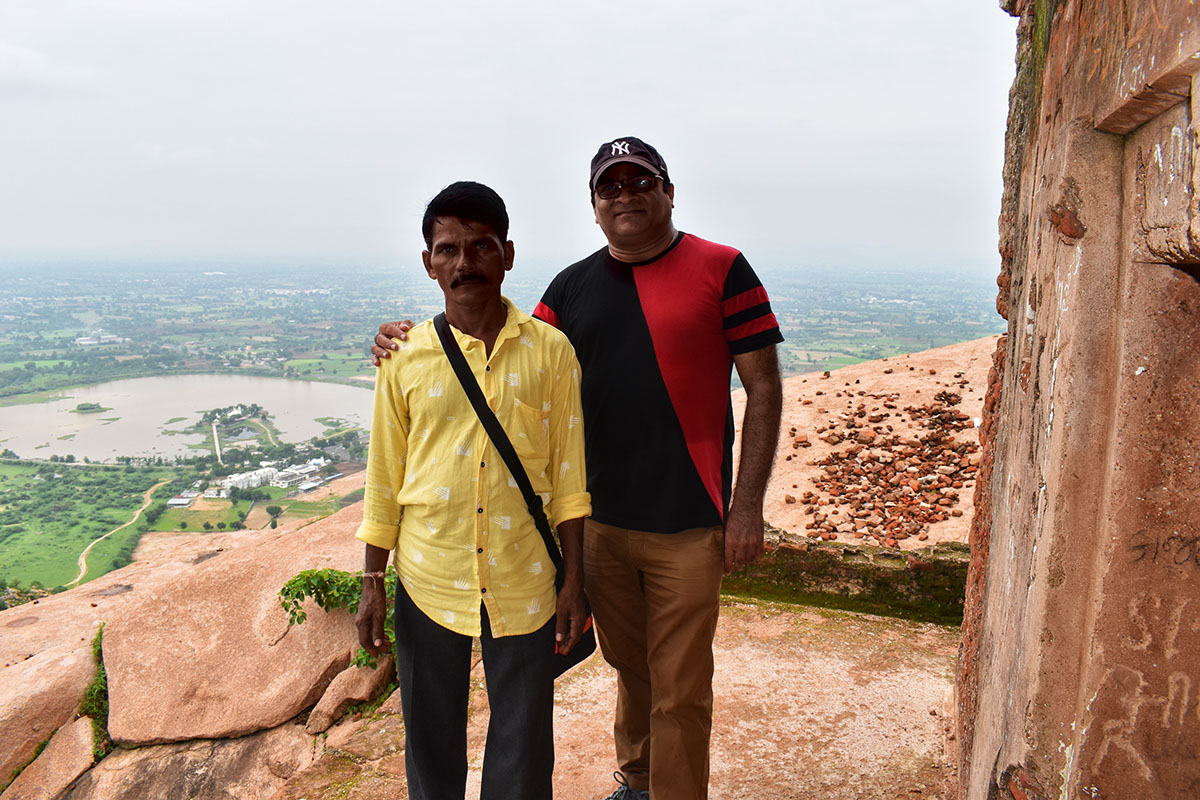
On the balcony of Ruthi Rani no Mahal with Kanubhai
You must take Kanubhai's assistance if you are planning a trek to the top of Idar's mountains. He is resourceful, has great knowledge about the place and tremendous strength to guide you through all the tough treks. You can reach him on his mobile number +91 95123 15028. The mobile network is not available everywhere on Idariyo Gadh, so keep trying if you can't reach him.
A visit to the historical city of Idar can't be justified with a stay of 2 days. It has a lot more to offer. There are a few hidden waterfalls and lesser-known treks worth exploring. A trek to Ranmal Chauki and Shrimad Rajchandra Vihar Dham are the ones not to be missed. I have put them on my bucket list for now. The city is enriched with historical stories, natural wealth and amazing scenic beauty. The scenic beauty is captivating and lends a calm vibe to the city. Besides, the intriguing stories keep your curiosity alive and urges you to explore with more fervor. All the buildings emulate the wealth of the royal family and the skills of the workers of those times. The stories it narrates captivates the traveler completely. It's filled with pieces of history wrapped around a resplendent blanket of nature.
Idar is located 100 km from Ahmedabad, which is both the nearest airport and the most convenient railway station. You can either take a state transport GSRTC bus or a cab to reach Idar.
Idar is a hiker's and rock climber's paradise. The terrain offers easy, moderate, and challenging trekking adventures. In addition to being a historic city, it is also home to ancient Jain temples.
Idar is a small town in Sabarkantha district of Gujarat in India. It is famous for handmade wooden toys and weaving. It is surrounded by various pilgrimage sites like Shamlaji, Khedbrahma and Dev ni Mori.
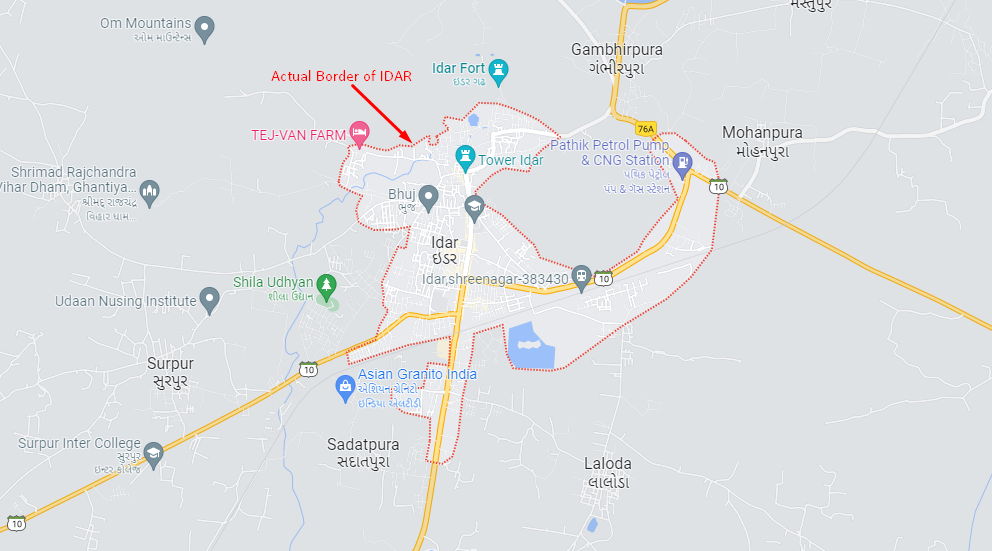
Disclaimer: This blog may contain affiliate links. At no extra cost to you, we may get a small commission if you buy anything. All products and services we endorse have been personally used or come highly recommended to us. These incomes allow us to keep the community supported and ad-free.

Very well narrated story it is, lovely pictures and that will help me to explore a lot. I visited idar when I was in sixth standard from my school. It was a school trip. But the way you narrated and with all such tiny detail is great. Beautiful story indeed!

Thank you Anand. I'm sure you would have enjoyed your trip to Idar even though it was quite long ago.

Very well narrated story it is, lovely pictures and that will help me to explore a lot. I visited idar when I was in sixth standard from my school. It was a school trip. But the way you narrated and with all such tiny detail is great. Beautiful story indeed!
Name
Email
Comment